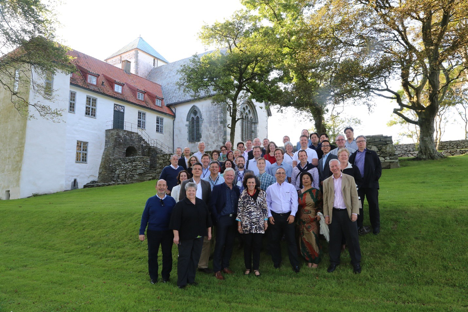|
EXTERNAL STRATEGIC RELATIONS COMMITTEES
With the mid-year bylaws change, the summer was very busy understanding the scope and operationalizing the External Strategic Relations Committee (ESRC). Chair, Sandi Feaster and Vice Chair Elaine Meyer, have worked to reimagine how SSH should focus their external lens. To that end, the three subcommittee Chairs and Vice Chairs have been working on developing their committee structure, organization and strategic goals for this upcoming year.
A special thank you goes to our SSH staff colleagues, particularly Kevin Helm, for helping the Chairs and Vice Chairs navigate the new bylaws.
Below is a brief update of the activities of the subcommittees:
Affiliations – Chair Demian Szyld and Vice Chair John Dean have been working together to review the affiliations agreements. This will be their primary focus - to review the affiliation agreements and make sure they are in alignment with the new bylaws. There are currently 21 affiliates, so this is a daunting task to ensure consistency and collaboration. We are happy to have Demian as Chair of Affiliations as he served as Vice Chair with Elaine Meyer, which is making the transition a much smoother process. The Affiliations Committee is also working on the International & Affiliates Reception that will be held at IMSH. This is a wonderful opportunity welcome our new affiliates and renew old friendships.
Government Relations – This subcommittee is a hybrid of the former PAGR (Public Affairs and Government Relations) committee, previously chaired by Don Combs. New Chair, Dayna Downing and Vice Chair Gerry Moses both have been active in PAGR and have a keen interest and knowledge in Govt. Relations. We want to give a special thank you to John Rice for his collaboration in helping us understand the various organizations and people that SSH has engaged with over the past few years, we look forward to continuing and growing the relationships. SSH will once again attend the I/ITSEC meeting where SSH has the opportunity to meet many vendors that serve military simulation and educate them about healthcare simulation and how their technologies may be applicable.
The focus this year will be on government agencies and not on our elected officials as we have done previously. We still encourage you, as private citizens with voting power, to tell your story of simulation.
Strategic Relations – The newly formed Strategic Relations subcommittee is lead by Chair Chuck Pozner and Vice Chair Doug Beighle. Chuck and Doug are looking to both proactively and reactively seek out partnerships that benefit the SSH mission. This year they will focus on developing one or two new strategic partnerships, of which one is the board approved strategic relations with SimGhosts.
Additionally, the Strategic Relations committee will continue to promote and encourage engagement of the Corporate Council. It is our great fortune having Doug Beighle serve as both the Chair of the Corporate Council and Vice Chair of Strategic Relations. This should strengthen the collaboration and coordination as we move forward with the Corporate Council.
GLOBAL NETWORK FOR SIMULATION IN HEALTHCARE (GNSH) 2015 MEETING
In August of 2015, the SSH president, President-elect, and past-president attended the Global Network for Simulation in Healthcare (GNSH) 2015 meeting in Stavenger, Norway. This two-and-a-half day consensus summit of 45 convened experts, academics, senior executives, and educators was conducted in the Utstein Style process, a proven method for building common understanding and consensus. The goal was to develop an international consensus for measuring value based simulation.

All members of GNSH and their constituents were asked to complete a survey prior to the meeting in Stavanger. More than 300 individuals responded to the survey, which helped to identify the perceived key stakeholders for driving and developing simulated practice across their healthcare environment. The top five from the survey were identified as:
• Hospital Executive Leadership
• Professional Associations
• Insurers/Payers
• Educators
• Policy Makers
The attendees were split into five working groups focused specifically on these stakeholders and then tasked with developing consensus in the following areas:
- Identification of high-level value domains specific to each stakeholders and their associated context.
- Identification and definition of value sub-domains for each high-level value domain.
- Discussion to agree on specific, measurable data points to demonstrate value within a domain.
- Identification of tools required to collect data from the specific domain.
- Identification of key messages about simulated practice that will answer identified stakeholder needs
The consensus findings will be further distilled and analyzed by a smaller working group in anticipation of publishing the findings in the near future.
|